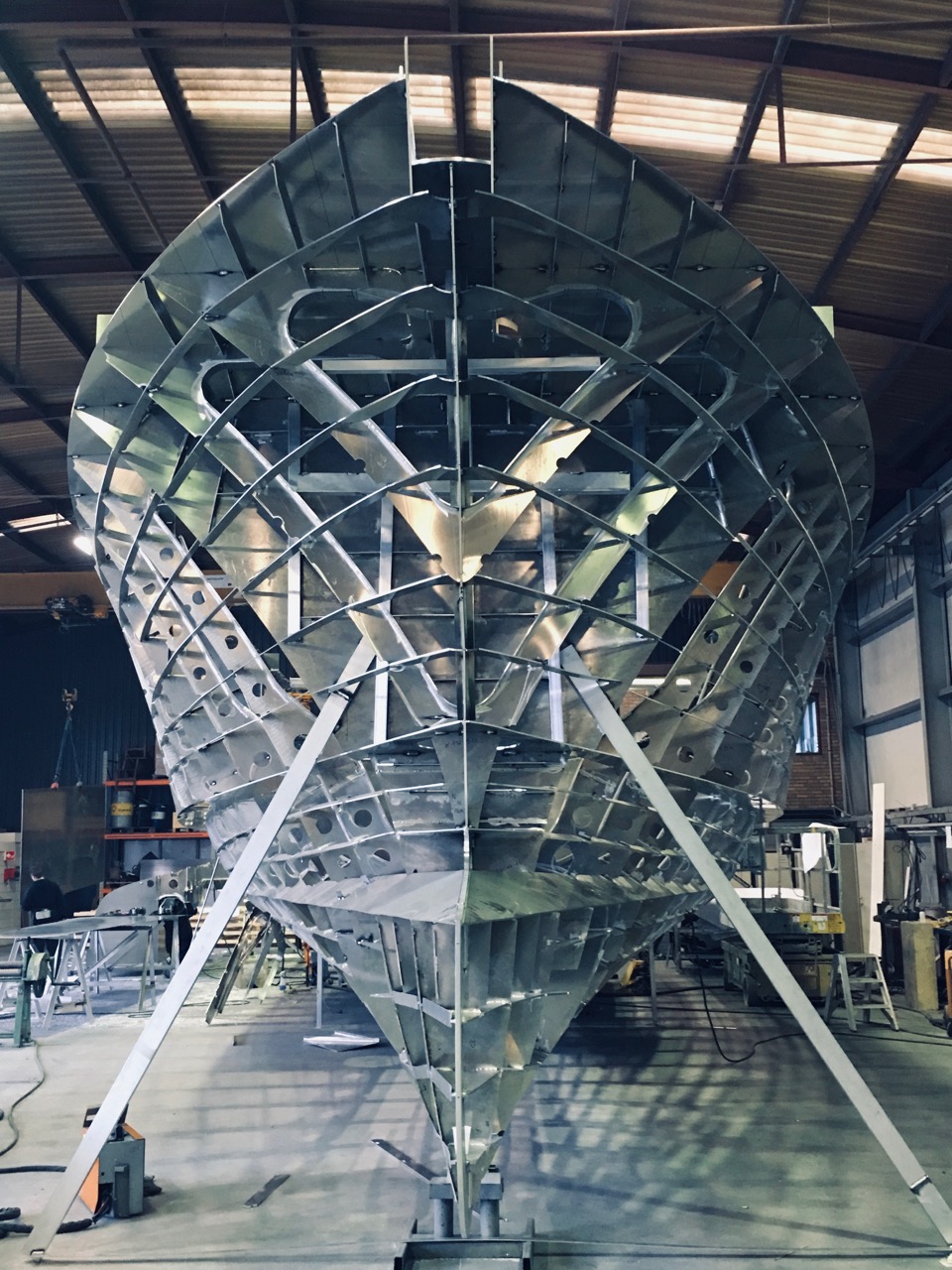DLBA UNIVERSITY
Design and Production of Aluminum Boats
APRIL 9, 2019
By Jonathan Soja
Due to reductions in materials costs and advances in fabrication technology, the marine industry has recently seen a proliferation of custom and semi-production aluminum boats. There always have been a number of large yacht builders who work exclusively in aluminum alloys, and they have been fairly price competitive alongside the well-known FRP custom yacht builders. However, recently we have seen a large number of craft produced in the 30 to 60 foot size range that have been quite cost competitive with typical FRP production craft.

There has also been a recent trend among government agency buyers for more rugged craft that stand up to abuse, abrasion and impact. Existing fleets of small FRP work boats and patrol craft have shown high maintenance costs due to their relatively fragile composite construction.
There are three reasons for resurgence of aluminum boats: Firstly, the cost of building and maintaining fiberglass production molds is eliminated. Secondly, recent aluminum material costs have undercut the price of FRP composite materials. And finally, the common availability of CNC cutting by metal suppliers has eliminated the time-consuming and costly lofting, set-up, and shipfitting skills historically associated with custom metal boats.
Since the architect’s design is done on computer with 3-D representation of all geometries, it is easy to expand the plates onto the flat and have metal suppliers accurately cut finished parts and deliver these parts as a kit for the boatbuilders. Delivered as such, there is no off cut wastage of metal. But most importantly, the boatbuilders’ skilled tradesmen do not have to do any measuring to achieve precise fit-up. These kits assemble almost like an erector set, incorporating for example, double slotted crossing framing members, and longitudinal stiffener notches cut in the transverse frame members. Additionally, parts numbers and reference plane index marks can be made on each part by either laser marker or light cuts by the CNC equipment.
Attendees will come away from this seminar with comparative production economics data, including raw material cost, fabricated labor-hours per pound, costs per labor-hour, typical margins, and overhead costs. That data answers the question “What is the cost of producing Boat XX’s structural parts, on a per-pound basis?” Boatbuilders can also use these numbers to benchmark, or compare, their own shop’s production rates to the rest of the industry.
Current FRP composites comparisons of raw materials and production costs will be presented alongside the aluminum costs. The objective of these comparisons will provide answers to the question, “What is the optimal cost, if the type of structural material is left open to question?”
For these comparisons, a typical finished-boat structural cost comparison in various types of FRP and aluminum will be presented in this seminar.
This session will be a slideshow presenting typical boat design projects which could be built either in FRP or aluminum, an outline of the relative advantages of each, materials cost versus production fabrication economies, and a photographic history of some recent CNC kit-cut metal boat building production jobs. An outline of typical production problems and approaches to avoid will be presented, also. The recent experience of a large yacht builder who switched from FRP to metal construction will be presented as a typical example of the relative advantages of each structural material.
Our presenters are two well-known naval architects who design marine craft both in composite materials as well as metal, and who can outline for us the relative advantages of aluminum as well as FRP composites. In the past half-dozen years, both have produced metal designs in this size range, and the finished cost of the boats has been equivalent to, if not somewhat less than, the composite competitor craft.
Share this article online:
HOW CAN WE HELP YOU?
FEEL FREE TO CONTACT US

DLBA Naval Architects
860 Greenbrier Circle, Suite 201 Chesapeake, Virginia 23320 USA
Phone: 757-545-3700 | Fax: 757-545-8227 | dlba@gibbscox.com
STAY UPDATED
SIGN UP FOR OUR NEWSLETTER
Keep your finger on the pulse of the latest points of focus in naval architecture and engineering: subscribe to DLBA’s concise monthly newsletter. Within it, we briefly describe and picture our latest projects and concepts. We encourage feedback and seek to have our newsletter spark conversation regarding potential collaborations and further advancements as we share our passion for the industry.
